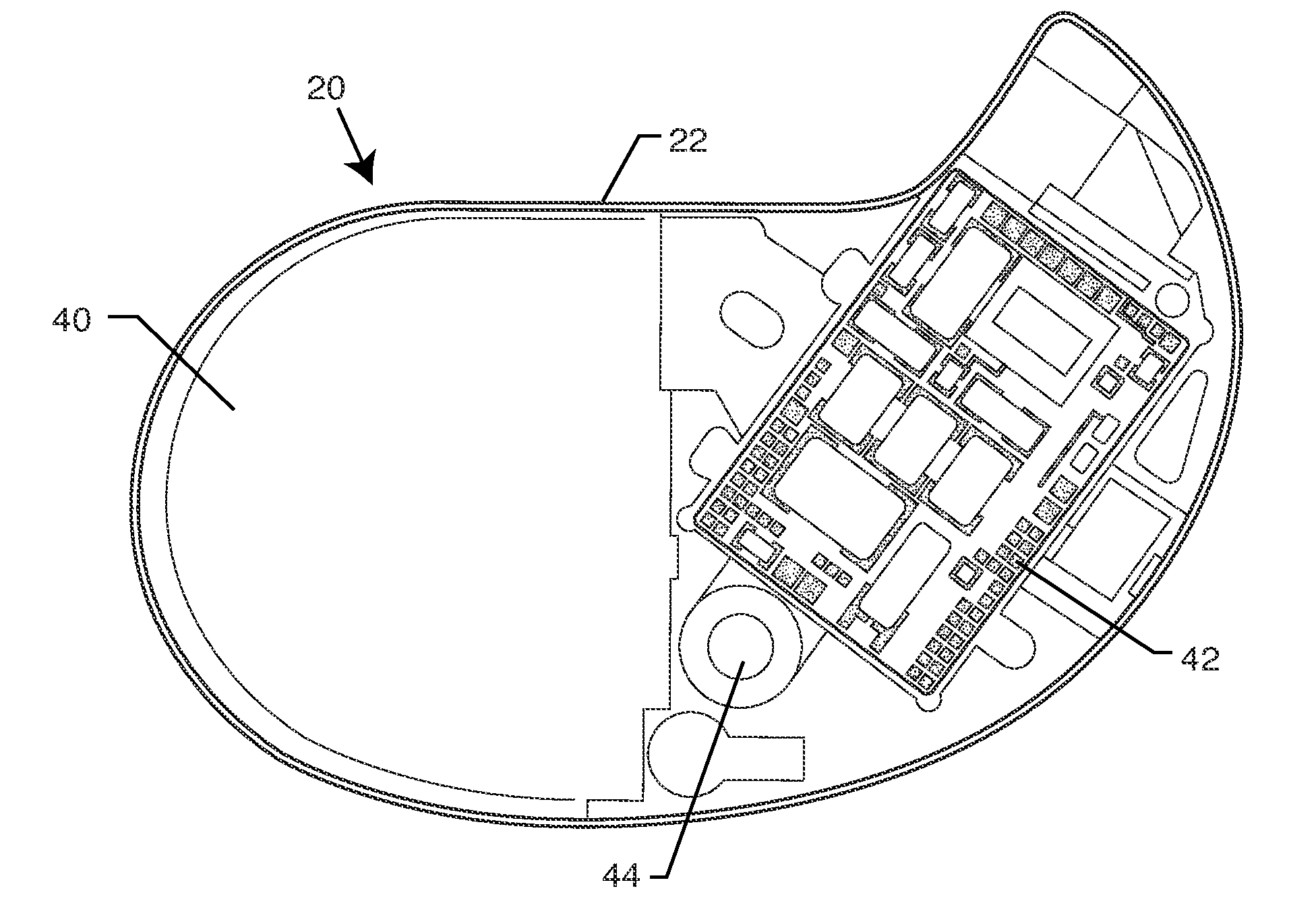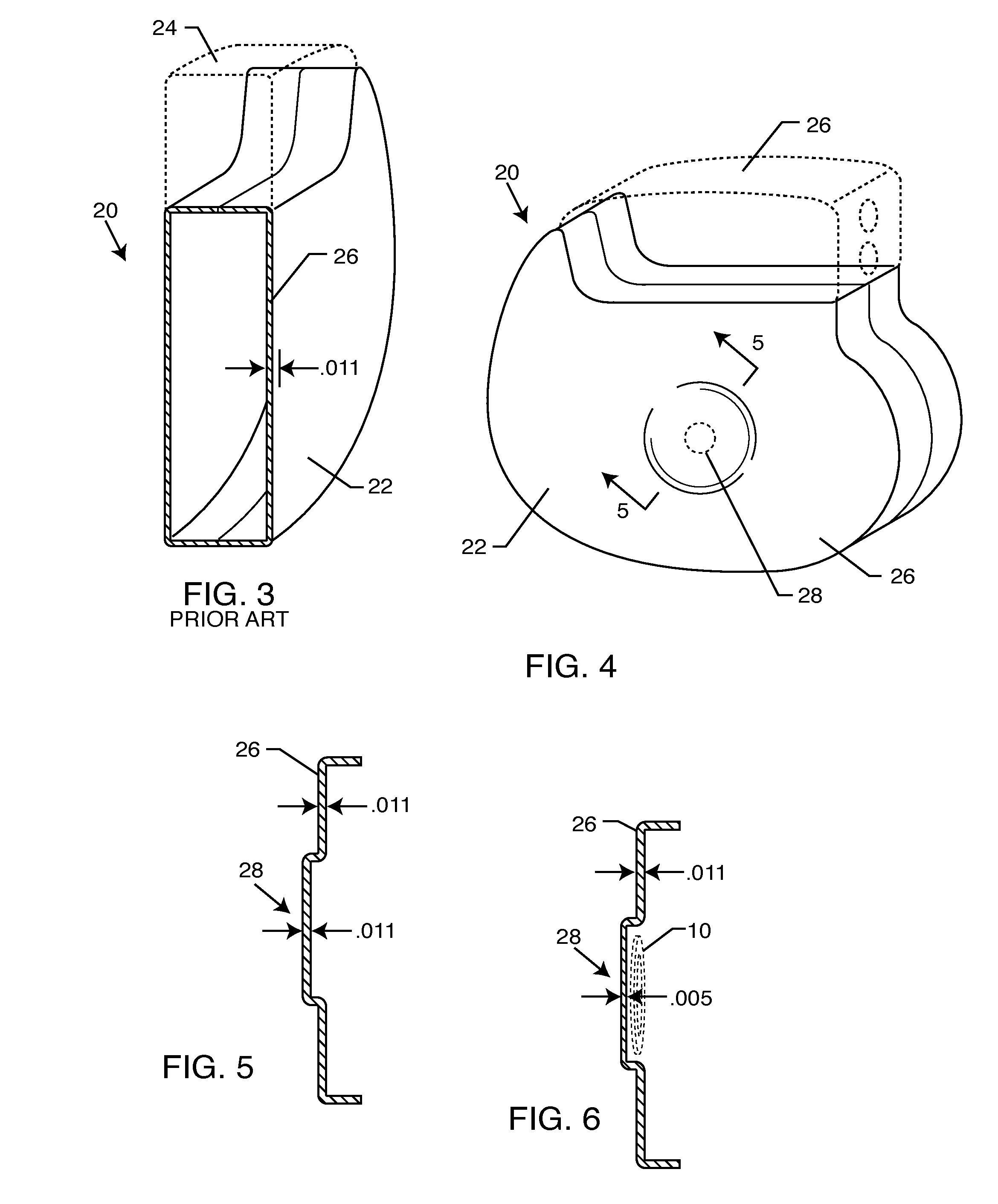RFID detection and identification system for implantable medical devices
a medical device and detection system technology, applied in the field of rfid interrogation systems, can solve the problems of inability to reliably identify, inability to provide information, and inability to detect and identify patients, so as to facilitate rf communication and prevent entry
- Summary
- Abstract
- Description
- Claims
- Application Information
AI Technical Summary
Benefits of technology
Problems solved by technology
Method used
Image
Examples
Embodiment Construction
[0037]As shown in the accompanying drawings for purposes of illustration, the present invention is related to systems and methods for providing RFID tags in a hermetically sealed manner so that a physician or other medical professional can identify and communicate with the RFID tag and ascertain information regarding the implanted medical device (IMD), patient, etc.
[0038]With reference now to FIG. 1, an exemplary prior art RFID tag 10 is shown. The RFID tag 10 includes a chip 12 which contains memory, and other electronic components and circuits necessary to store, send, and in some cases receive and store data in volatile memory. An antenna 14 is operably connected to the chip 12, and the chip 12 and antenna 14 are typically supported by a substrate or base 16. Such RFID tags are well known in the art.
[0039]With reference now to FIG. 2, an IMD 20 is illustrated. In this case, the IMD 20 is a pacemaker or implantable cardioverter defibrillator (ICD). However, the present invention i...
PUM
 Login to View More
Login to View More Abstract
Description
Claims
Application Information
 Login to View More
Login to View More - R&D
- Intellectual Property
- Life Sciences
- Materials
- Tech Scout
- Unparalleled Data Quality
- Higher Quality Content
- 60% Fewer Hallucinations
Browse by: Latest US Patents, China's latest patents, Technical Efficacy Thesaurus, Application Domain, Technology Topic, Popular Technical Reports.
© 2025 PatSnap. All rights reserved.Legal|Privacy policy|Modern Slavery Act Transparency Statement|Sitemap|About US| Contact US: help@patsnap.com



